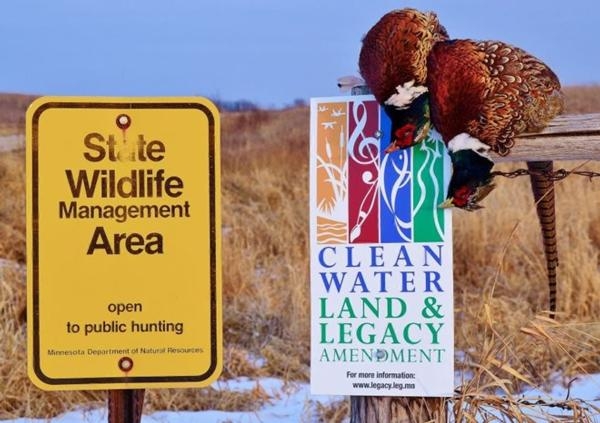PHEASANTS FOREVER EXPLORES THE MINNESOTA PICTURE

PHEASANTS FOREVER EXPLORES THE MINNESOTA PICTURE. PHEASANT COUNTS ARE DOWN, BUT BIRDS ARE HOLDING THEIR OWN WHERE HABITAT IS GOOD.
By Tom Carpenter
Minnesota always has ebbs and flows in its pheasant habitat and bird counts. The state has been in an ebb situation for a few years now, with all the acres (over 686,000) that have come out of the Conservation Reserve Program (CRP) since 2007.
Pheasant counts are down this year, but birds are by no means down for the count.
“Summer weather was relatively normal, and overall favorable for late-season nesting attempts and brood survival,” reports Lindsey Messinger, Wildlife Research Biologist with the Minnesota Department of Natural Resources (DNR) Farmland Wildlife Populations and Research Group, in Madelia. “There were a few isolated areas receiving heavier-than-normal rainfall events that may have impacted chick survival locally.”
Minnesota conducts an extensive annual roadside wildlife survey in late summer, with a focus on pheasants. “Our 2017 statewide pheasant index, at 38.1 birds/100 miles, fell 26% from 2016 and was below the 10-year and long-term averages,” says Messinger. “Although some areas experienced localized early spring snow storms and heavy rainfall events which likely impacted nest success and brood survival locally, weather over the reproductive season was mostly favorable.”
“The two primary drivers of the pheasant index produced from our surveys each year are weather and habitat,” says Messinger. “With favorable weather conditions, we can’t ignore consistent grassland habitat loss occurring statewide.”
“Minnesota, like many other midwestern states, depends largely on Farm Bill programs such as CRP to put and keep grassland habitat on the landscape,” says Messinger. “Minnesota has consistently lost grassland habitat enrolled in CRP since 2007. In 2017 alone, 26,327 acres of CRP were lost statewide with a majority of those lost acres occurring within the pheasant range.”
The following Minnesota chart tells the story. Pheasant production (and hunter harvest) mirrors the amount of grassland on the landscape:
Posted in: News

